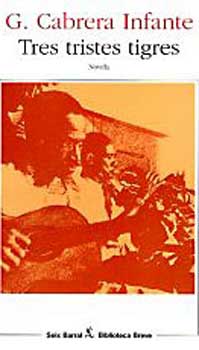The Other Guillermo
Daisy Valera

HAVANA TIMES — If this post were to have an appropriate title for a radio soap opera, it would be: “The Guillermos of My Life.” But it doesn’t.
I’m writing because I just found my old beat up ID card, and on the line that says Father you can read “Guillermo Jesus.”
I swear I’m always surprised. Who the hell is this Guillermo?
Thinking back, I came up with a few answers.
Guillermo is a neighbor who lives with his parents on the fourth floor of the Yugoslavian-style building where my family still lives (I left there at the age of 16).
I think “Guillermito” (as people fondly call him) is almost 50, but he’s a tall, dark and handsome guy who’s still capable of making half the girls on the block sigh.
Along with the photos of the first birthday of a girl who they say is me (though she doesn’t look anything like me) were the only pictures of my mother’s wedding along with photos of the neighbor who I was describing.
Together with shots of suits, orchids, rings, signatures and the big eyes of Zoraida, there was Guillermo’s incredibly perfect smile.
But nothing more. Since he’s a quiet neighbor, I’ve never even heard the sound of his voice.
Nor do I know what he does for a living. But he was the first person to buy a modern bike when I was in high school, when up until then all I had seen were Chinese bicycles.
At fifteen, another Guillermo came into my life – and this is the important one.
As a teenager, I kept one book on my nightstand: Mea Cuba, by Guillermo Cabrera Infante.
It was an intellectual/historical eye-opener. After reading it, I began to distrust all those books with “tales of Cuba” that crisscrossed all levels of education here on the island.
In Mea Cuba I found an Ernesto “Che” Guevara who looked more like some trigger-happy hit man than someone with the high-sounding title of “Heroic Guerrilla.”
I found a Fidel Castro screwing up (even more) the assault on the Moncada Barracks because of his complex about wearing glasses.
I found a Jose Marti committing suicide.
Mea Cuba is like a guide to exploring the Cuban literature that’s buried under both socialist realism and the quinquenio gris [censorship during the 1970’s].
It was a surprise to find the caustic truth and the anger of this disappointed soul. It was the stain on neatly recounted revolutionary history.
Don’t wonder whether I believe Guillermo Cabrera Infante or not. Does it matter?
In 2011, an essay attempted to resuscitate him for the Cuban people, yet none of his books have been published here.
This year I finished reading everything he wrote thanks to a man who loves cats and a gift from Yordanka: Tres Tristes Tigres (Three Trapped Tigers).
Politically, he left the label that at some point he used: a “reactionary on the left.”
I prefer to embrace his manner of loving the city, in his amazing ability to describe personalities and emotions, in his rhythmic use of language.
He managed to portray the lights and shadows of this Havana – I’m trying now.






Daisy,
If this “Guillermo Jesus” has a great smile, that would explain your photograph. : )
I am reading G. Infante’s novel, “Infante’s Inferno” right now, with his witty word play and wonderful descriptions of the time and place, Havana in the late 40’s and early 50’s. “Three Trapped Tigers” is next. I’ll have to add “Mea Cuba” to my growing stack of Cuban literature.
I’m another admirer of Guillermo Cabrera Infante and, while not having read all of his works, fell in love with Tres Tristes Tigres, and Mea (Culpa) Cuba. I am always drawn to brilliant writing, even if sometimes disagreeing with the author’s political viewpoint (also was the case with the French writer Luis Ferdinand Celine, who I also much admire). Is Cabrera Infante related to the director of the first post-Revolutionary film, “P.M.”? (This is another work I much admire, which depicts men–and women–as they are, rather than as we’d like them to be—on a Saturday night in Regla, circa 1960 or 1961!